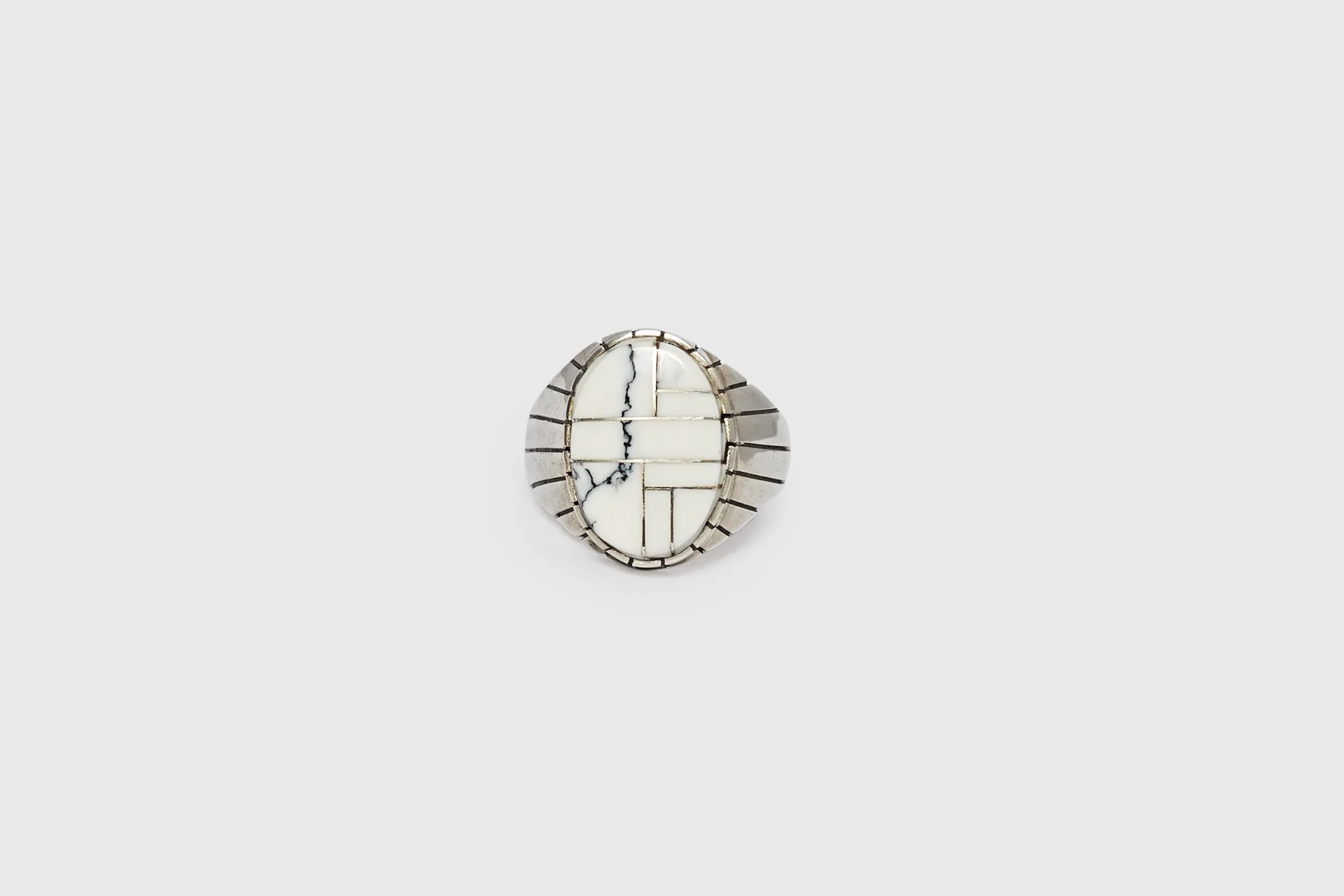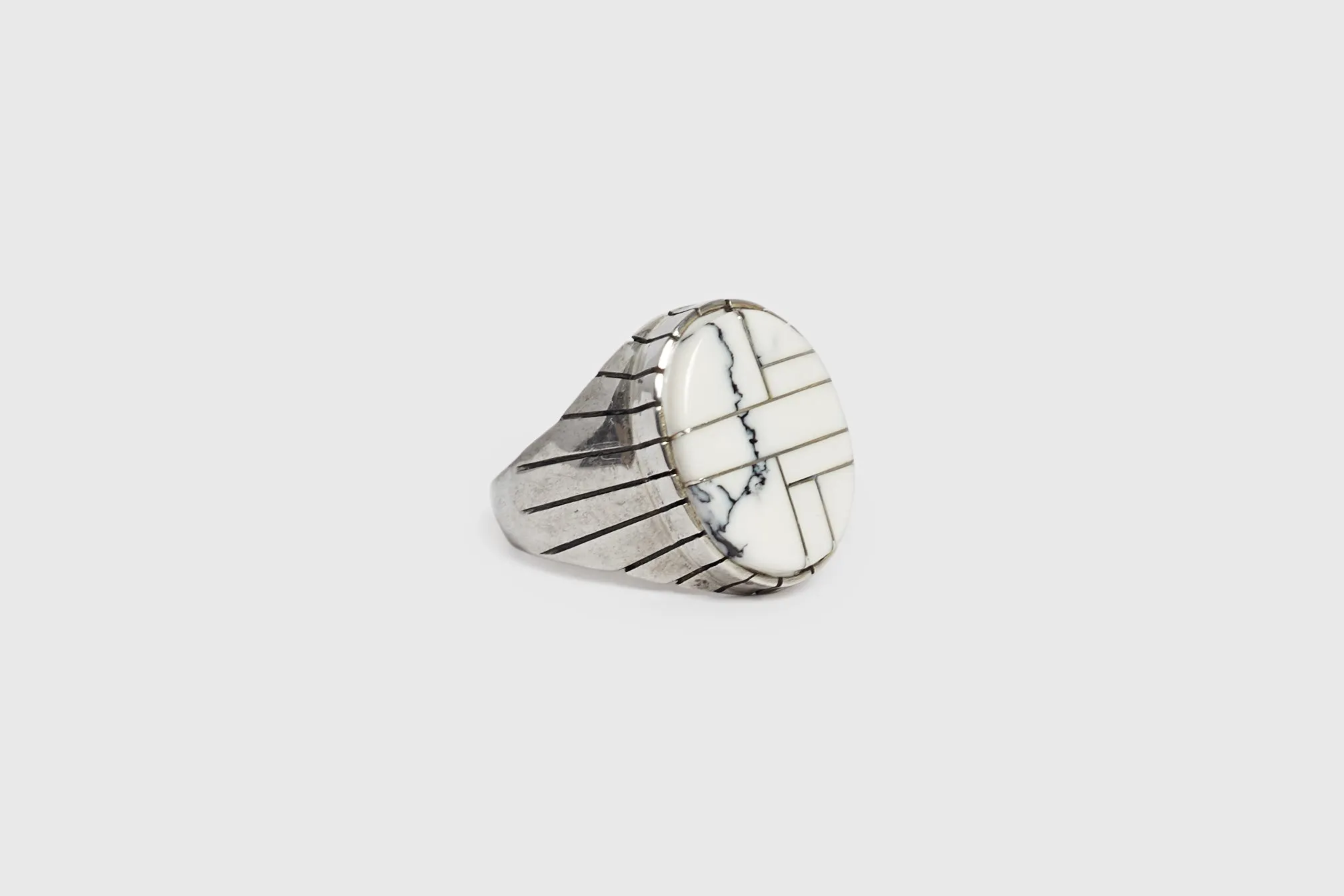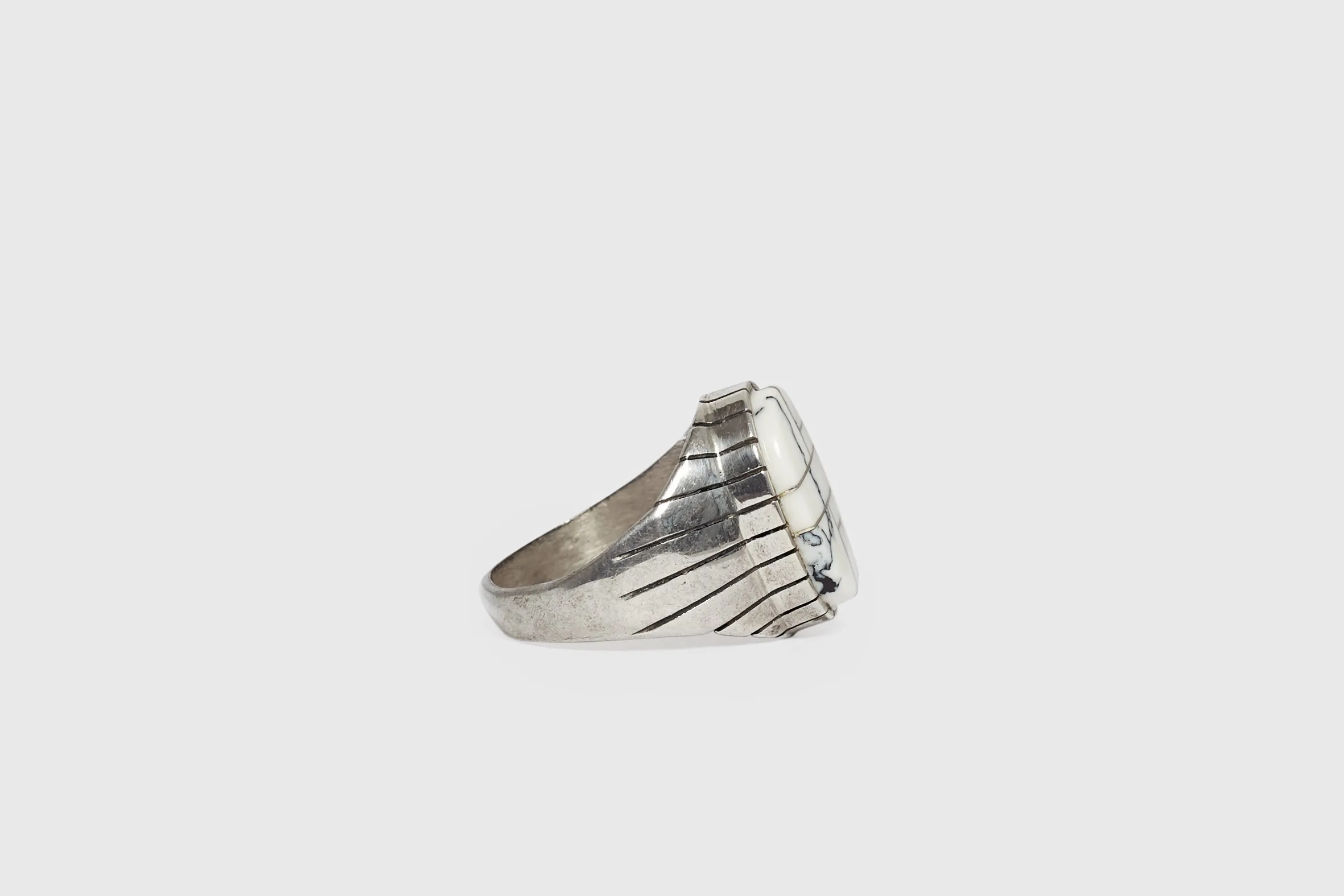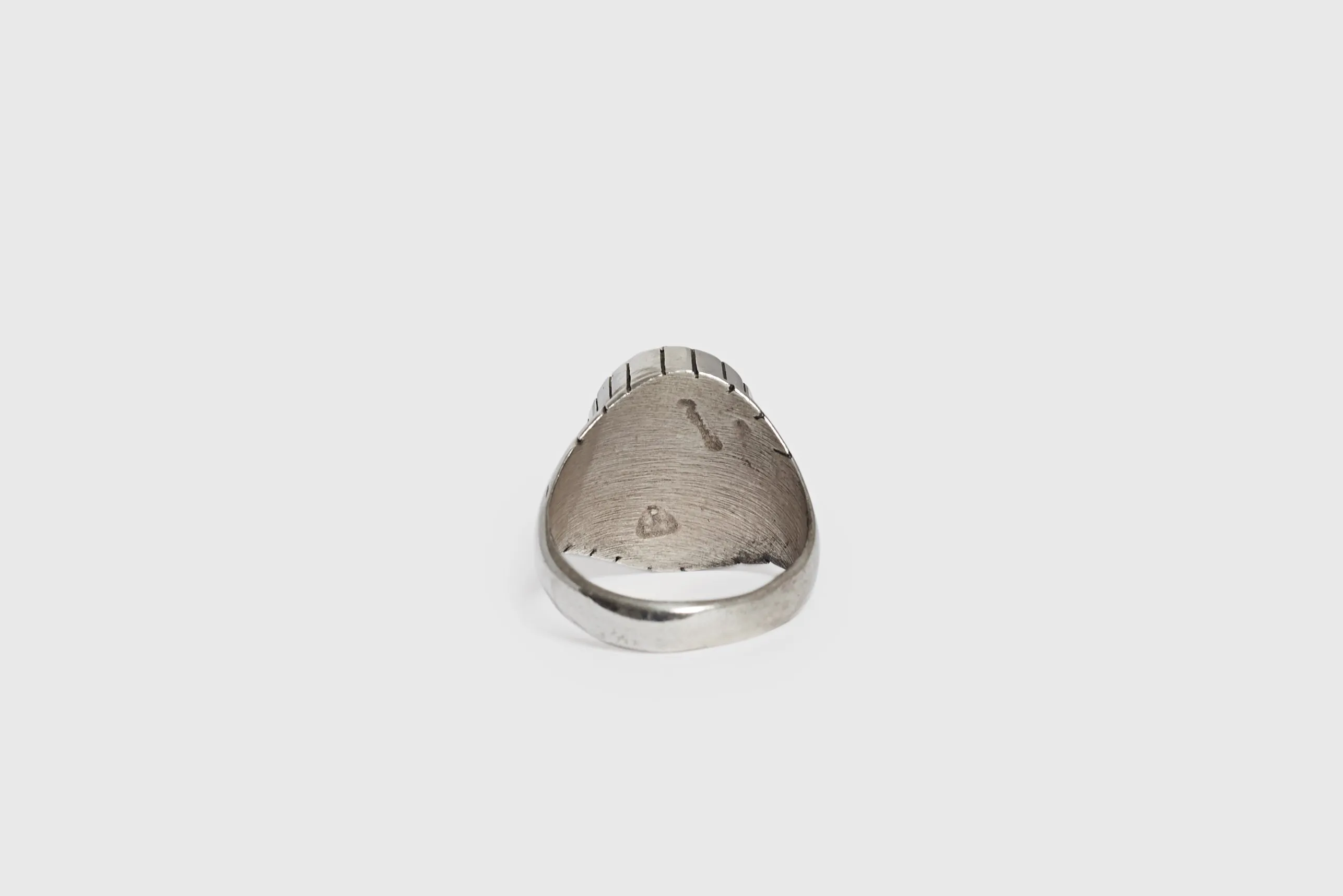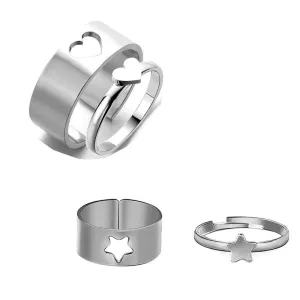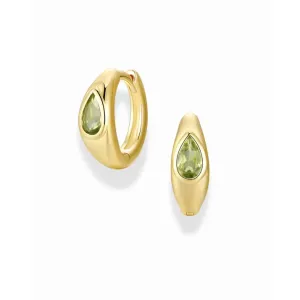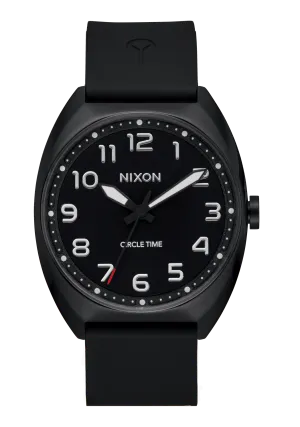An oval silver ring set with white buffalo turquoise. The ring is very distinctive and unique looking ring due to the stone. Though it is not technically turquoise, White Buffalo Turquoise has been found in conjunction with genuine turquoise in the Dry Creek Mine on the Shoshone Reservation. Its unique, almost Carrara Mable looking cream-colored and white stone with black matrix is formed in much the same way as blue and green turquoise, but the higher concentration of aluminum yields an entirely unique stone. With only one vein known to man, there is a premium placed on the White Buffalo stone. This unique stone was given its name by Native Americans because of its rarity in nature. Discovered in 1993 and predicted to have a short productive phase, White Buffalo is among the most popular semi-precious stones in the Southwest.
The design is very similar to that of the Zuni Native American tribe, however this ring was made by jeweller Ray Jack, from the Navajo tribe. The Zuni tribe, now located in Northwestern New Mexico, was the second Native American group to learn Mexican silversmithing techniques. Navajo artist Atsidi Chon initially taught the art to a member of the Zuni tribe. Their artisans refined the Navajo 'cluster work' technique, characterized by a series of shaped stones set into various bezel settings. This 'cluster work' later evolved into the more intricate petit point and needlepoint styles. A variety of bold and colourful stones are cemented into channels created by soldering pieces of silver to a backing plate. The stones are then polished flat, resulting in multicolored designs with veins of silver running through them.
What makes this ring interesting in its appearance from other inlaid rings is the neutral, single color stone used. The ring is a size 11.25. This ring, and any other can be sized to any required size.

